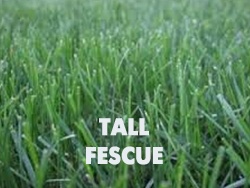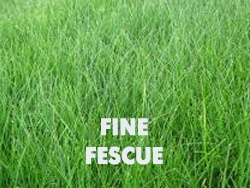COOL SEASON GRASSES
This is week 2 of our 4 week exploration of drought tolerant turf grass options in Southern California.
Last week we talked about warm season grasses; this week we will take a look at popular cool season grasses.
Cool season grasses perform best in northern and coastal climates in fall and spring but will grow in warmer climates with irrigation. They generally stay green year round unless temperatures are consistently below freezing.
In the cool season category, Tall Fescues exhibit the greatest drought tolerance due to the fact that root depth can go to 3 feet or greater. This extensive root system enables the plant to draw water from a larger soil profile meaning that once the turf becomes established it needs less frequent watering than other cool season grasses and can withstand longer periods of drought. Certain varieties of tall fescue have shown marginal improvements in drought tolerance. Such varieties have been designated as TWCA (Turfgrass Water Conservation Alliance) qualified grasses. TWCA approved varieties include 2nd Millennium and Aquavita. TWCA approved tall fescue blends include “Triple Crown Extreme.”
These grasses include Creeping Red Fescue, Chewings Fescue and Hard Fescue. These grasses actually use less water than the tall fescues above but because of their shallower root system it has only fair drought tolerance although they exhibit good drought tolerance under shade conditions.
Perennial Ryegrass establishes quickly but it exhibits a high water use rate and a shallower root system which impacts its drought tolerance. If perennial ryegrasses are utilized it is recommended that TWCA qualified varieties be used as they exhibit better drought tolerance. TWCA qualified perennial ryegrasses include Manhattan 5 Perennial Ryegrass.
Turfgrass Selection & The California Drought
Additional water savings can be achieved by careful consideration of the type of turfgrass that is used. First it is important to consider what use the lawn will be. Heavy traffic, pets, light traffic, aesthetics or a combination? Once a determination is made on the use then grass selection becomes easier. All grasses fall into one of two categories; cool season and warm season.
Cool season grasses grow during the cooler months of the year (fall-spring) and stay green throughout the year in mild, Southern California climates. The most popular cool season grasses include Tall Fescue, Perennial and Annual Ryegrass, Fine Fescues and Kentucky Bluegrasses. Of these grasses the Tall Fescues are the most heat and drought resistant. Conversely the warm season grasses prefer the warm months (late spring-early fall). They thrive in heat and go dormant in the winter turning brown in colder inland valleys but staying relatively green along the milder coast.
Warm season grasses can use between 30 to 50 percent less water than cool season grasses when measured over one year. Types of warm season grasses include Bermuda grass (common, improved and hybrid types), Zoysia, St Augustine, Kikuyu and Buffalo grass. Of these the bermudagrasses and kikuyu are the most wear tolerant and the most aggressive growing while the St Augustine and Zoysia are less aggressive and have some shade tolerance.
It is not necessary to restrict your turfgrass choice to solely a cool or warm season type. Many lawns and sports fields contain a combination of both cool and warm season grasses. However the water usage of these combination lawns will need to reflect the needs of a cool season grass.
Next week we will explore irrigation options, sprinkler heads and other ways besides turf selection to reduce outdoor water usage.
Looking for Drought Tolerant Options? Questions about seeds? Turf Options? Need to seed fast?
Hydroseeding is a cost effective alternative to sod, and you have much more control over turf selection and blends.
Call us today to discuss your planting needs.
Visit us at our website at HydroseedingSocal.com



